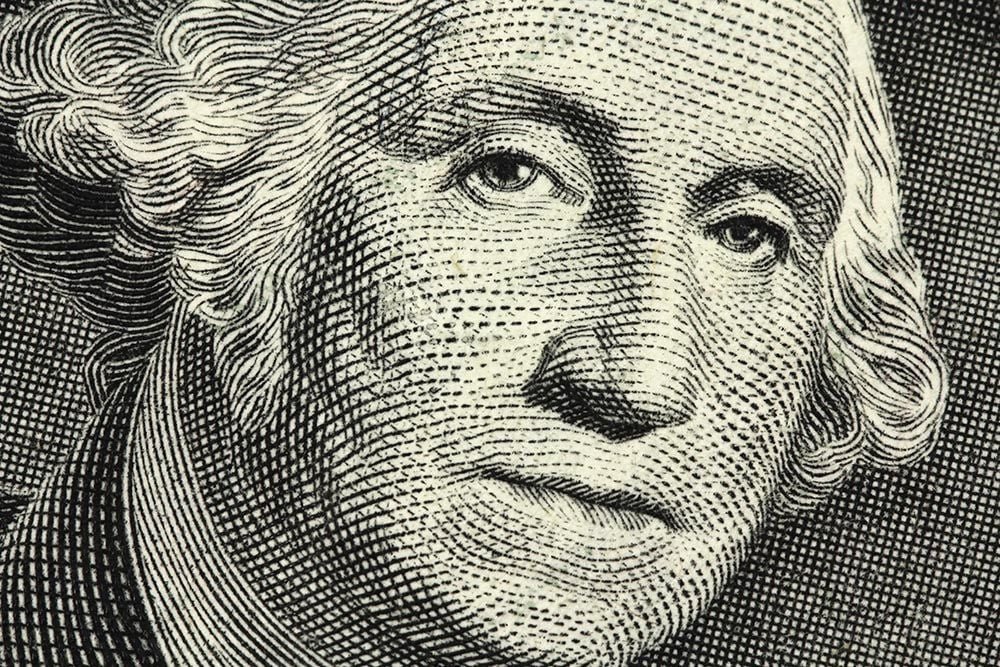"Curb your Peak Dollar enthusiasm" says ING
- Written by: Gary Howes
-

Image © Adobe Images
'Peak Dollar' has not arrived say analysts at ING Bank, meaning the Pound's lows against the U.S. currency might still lie ahead.
New research from the Dutch based lender and global investment bank tells clients to "curb your peak dollar enthusiasm," as the recent decline in the currency is a likely to prove a mere countertrend correction.
"The reality is that the Fed is likely to stay on track with its tightening. We think the dollar is more likely to retest its highs than correct much lower," says Chris Turner, Global Head of Markets and Regional Head of Research for UK & CEE at ING Bank N.V.
'Peak dollar' refers to the point the Dollar's multi-month trend finally turns, a development that is largely linked to expectations of 'peak Fed'.
Peak fed meanwhile refers to the top in market expectations for the number and scale of interest rate hikes to be delivered from the Fed. Much of the Dollar's rally has been underpinned by the Fed's ongoing interest rate hiking cycle, therefore its end could herald a shift in the Dollar's fortunes.
But the Fed will only ease back when it feels inflation is going its way; we got a taster of this earlier in August when U.S. inflation came in below consensus.
Some analysts suggested it was a game changer moment for financial markets.
It also corresponded with a decline in the value of the Dollar, allowing the Pound to Dollar exchange rate (GBP/USD) a run up to 1.2277.
But ING's currency analysts point out the Fed has been consistent in its communications that it will not be blown off target by some softer activity or price data.
"In fact, it now looks like US activity is accelerating again as lower gasoline prices leave more dollars in the pockets of US consumers. The 2023 US recession narrative looks a tough one to sell near term," says Turner.
European currencies are said to be at particular risk of a renewed onslaught by the Dollar.
"Rising energy prices should continue to drive a wedge between the exporters of North America and the importers of Europe, meaning a much greater conviction of a recession in Europe," says Turner.
This view is one also held by JP Morgan as we report here; in short analysts at the Wall Street bank believe the currencies belonging to net exporters will appreciate over coming months and currencies belonging to net importers will struggle.
With the UK running a virtually permanent trade deficit, and the Eurozone now also printing a deficit, the Euro and Pound stand to struggle in such an environment.
Above: The Dollar index (top) and GBP/USD (bottom) at daily intervals.
For the Dollar to decline sustainably it stands other currencies must appreciate, but numerous analysts point out that there is little to suggest a turn in fortunes for other major currencies in the current environment of slowing global growth.
Regarding the Euro's prospects, ING says the European Central Bank's second 50bp rate hike on September 08 may well conclude its tightening cycle.
"Rate spreads and the energy income shock make it a very tough environment for the euro," says Turner.
Regarding the Pound, "sterling’s best hope is that the Bank of England delivers on most of the aggressive tightening currently priced into markets," says Turner. (Set your FX rate alert here).
ING forecasts the Pound to Dollar exchange rate at 1.20 in one month, 1.19 in three to six months and 1.23 in 12 months.
Euro-Dollar is forecast at 1.02 in the one to six month timeframe and 1.07 in twelve months.
Swedbank, the Scandinavian lender and investment bank, says it maintains a forecast for the Euro to Dollar exchange rate (EUR/USD) to remain on course for another test of 1.0.
"The idea that US headline inflation peaking would be enough to relax Fed is wishful thinking. USD longs have been reduced and rate pricing shows less than 50/50 pricing 75 bp hike in September. We see USD stay in demand on carry and the challenging outlook in Europe/China, and EURUSD back to parity," says Anders Eklöf, Chief FX Strategist at Swedbank.
Economists at Swedbank note the market is currently priced for another potential 75 basis point hike at the Fed in September, followed by further hikes to take the Funds Rate to a peak of 3.6% in early 2023.
From there, it is expected to pause before cutting.
However, "we believe risk if anything is tilted to the upside on that pricing, which should support the USD," says Eklöf.
Regarding the Euro, Swedbank says the challenges for the Eurozone are vast as high cost of living from energy dig deep holes in real incomes and export demand from China seem to remain slow.
They also say there is an obvious risk Germany will run out of natural gas in the winter.
The EUR/USD rally of July-August appears to have faded as Eurozone energy prices ramp up again and a retracement in the exchange rate is underway once more.
"We continue to look for EURUSD revisiting parity in the fall, but acknowledge that USD is dear, and that USD is having some dampening effect on US import prices," says Eklöf.
The 2022 low is located at 0.9954.








